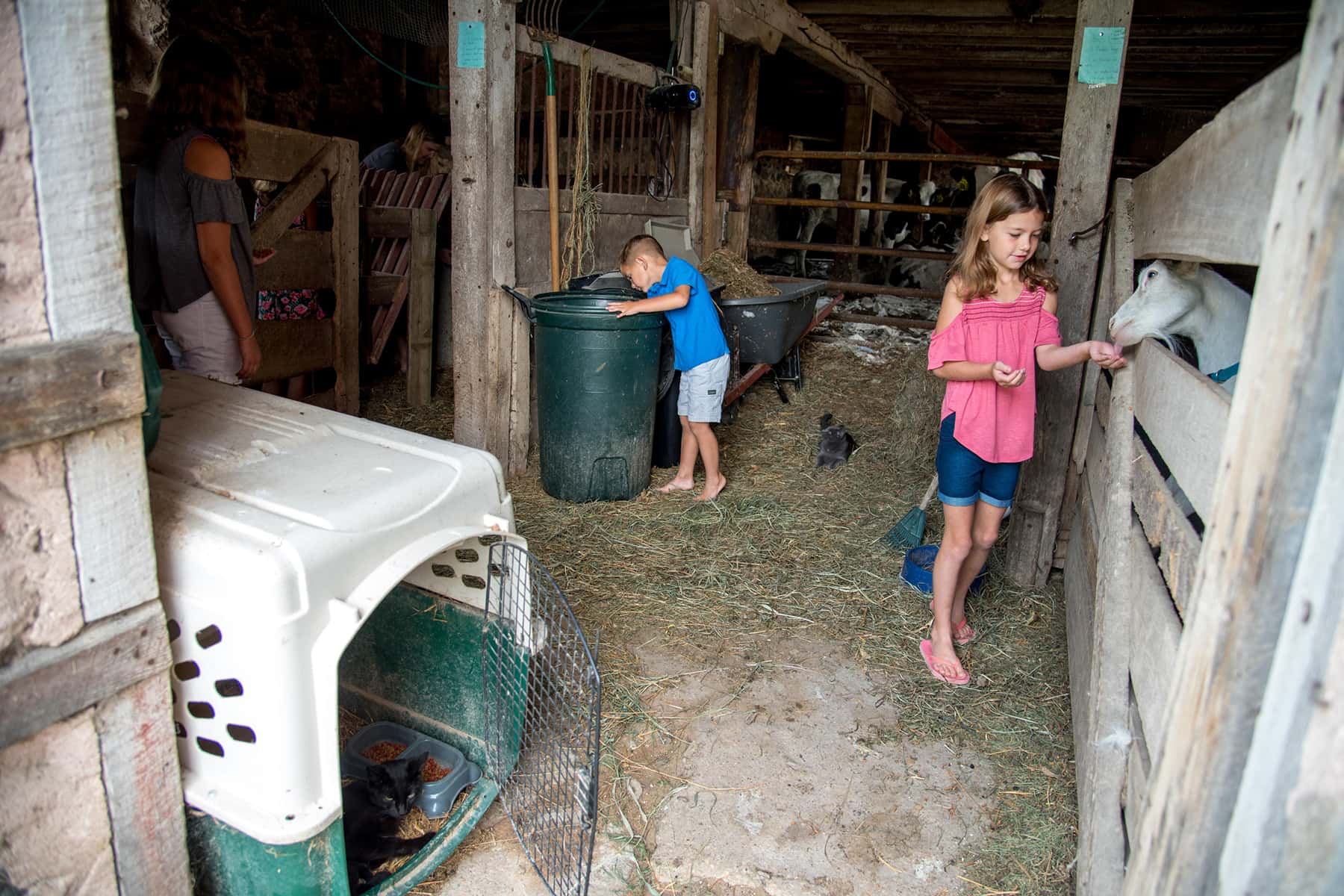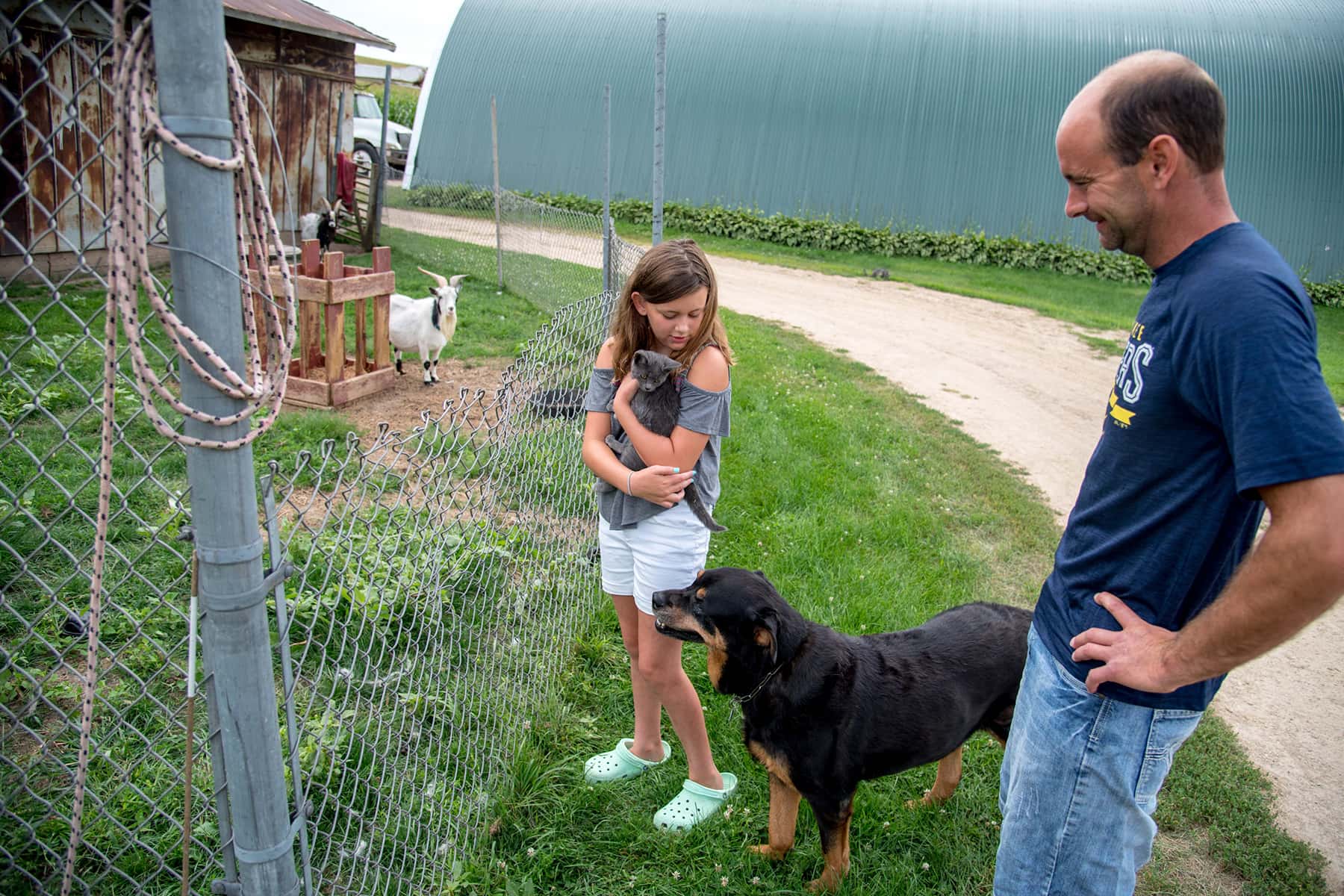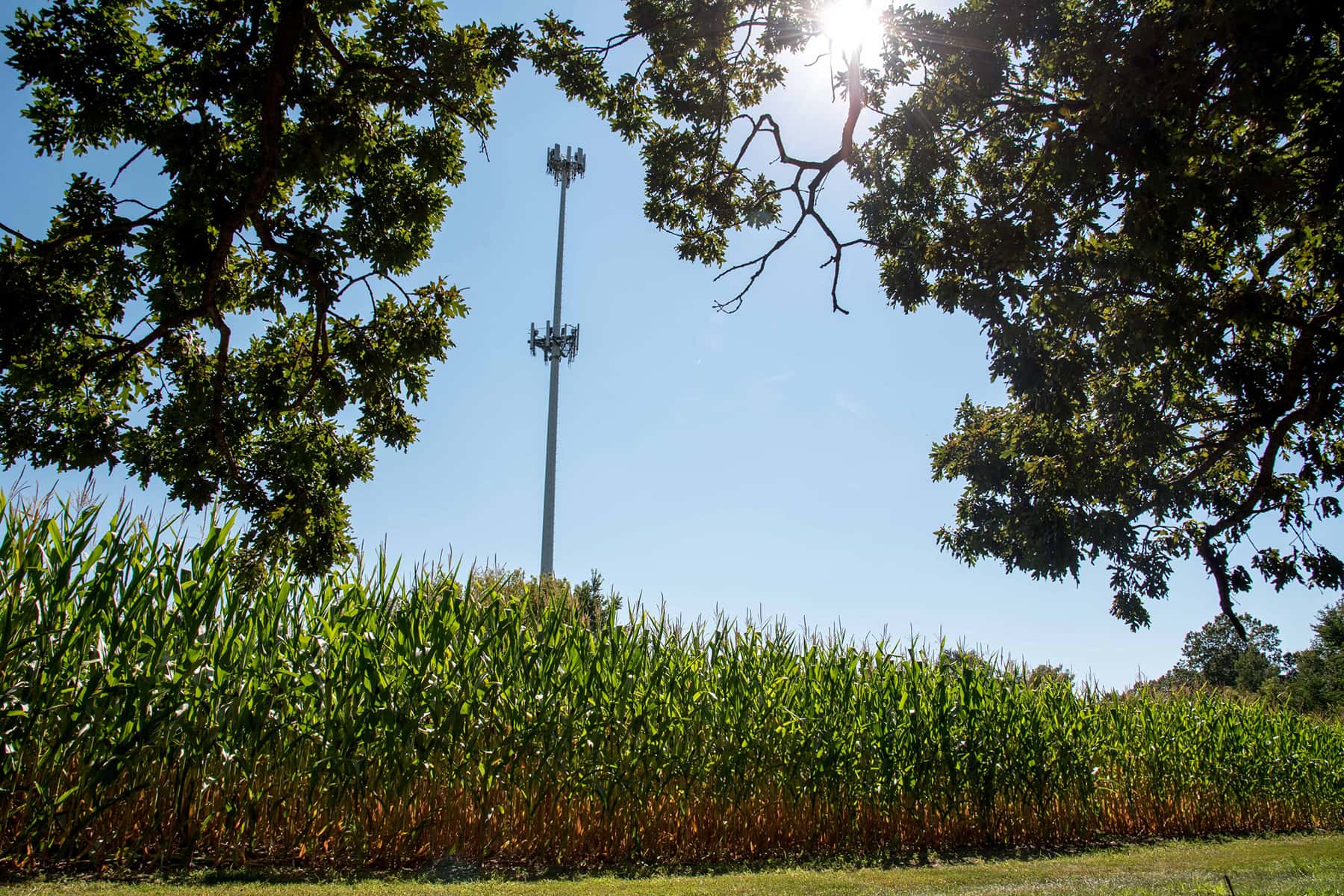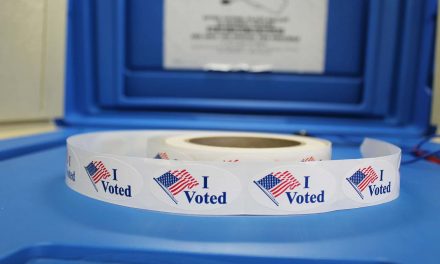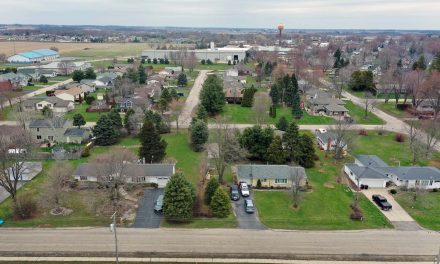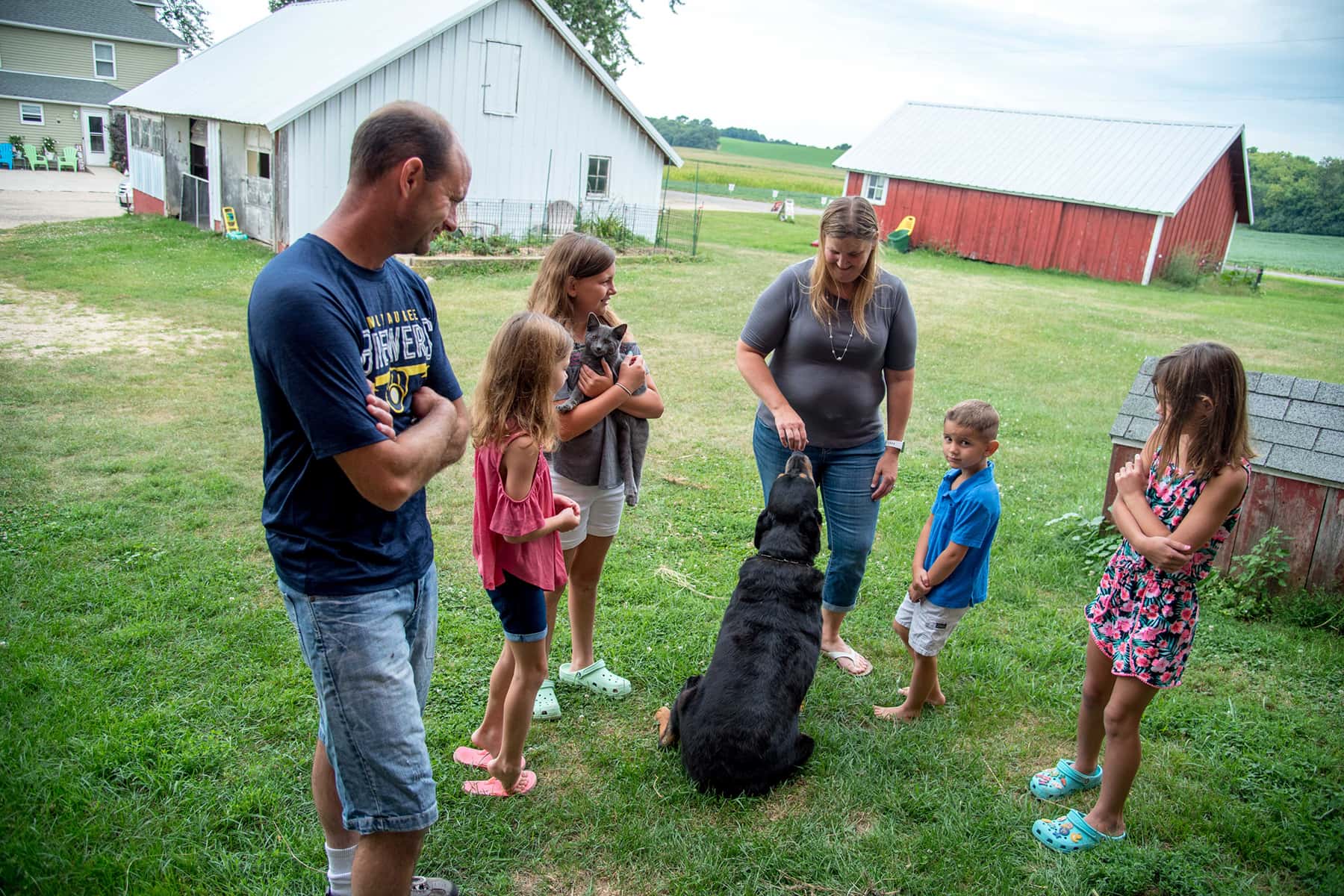
Schools in Wisconsin have spent millions of dollars on hotspots to help students with poor internet service learn online as the coronavirus pandemic grinds on.
The 40-acre farmette where the Hellenbrand family lives in south-central Wisconsin is an eclectic mix of people and animals. Amy Jo Hellenbrand and her husband raise corn, soybeans, wheat, heifers, chickens, goats and bunnies on their land just outside the village of Dane, about 20 miles north of Madison.
“We do have a little petting zoo,” she said with a chuckle.
They also raise four children — ages 11, 9, 8 and 5 — and up to five more children attend her home day care at least for part of the day. That made this spring particularly challenging, when the pandemic forced schools across the state to close. Mirroring the rest of Wisconsin, education for the Hellenbrand children relocated to their kitchen table, and Amy Jo and her husband Andy were in charge of making sure their children tended to their school work. That task was made even more difficult by sluggish internet service that only further slows when the family nears monthly data limits.
“It was wild, it was chaotic, stressful,” Hellenbrand said. “I broke out in hives because of the stress and anxiety. I was on steroids for a while.”
The 44-year-old mother thinks children need to be back in school — at least part-time. But the Lodi School District, where the children attend, decided in July to provide schooling virtually through at least November. That’s going to make life tough for the Hellenbrands.
“I don’t want anybody to get sick and die,” Amy Jo Hellenbrand said. “I don’t want my children to get sick, I don’t want my friends’ children to get sick. But something needs to change.”
About 30 miles west of Madison near Blue Mounds, Matt Millar also struggled with the pandemic that sent his three children — ages 10, 7 and 5 — back home during the school day. Millar himself works from home as a data scientist, and he doesn’t have a lot of extra time to manage his children’s education.
“There were many days where I didn’t get one of the kids onto their class Zoom on time, or at all,” Millar said. “It wasn’t going to happen. There’s three of them.”
The 43-year-old dad and the children’s mother — who split custody — are now trying to decide what to do in the fall. The Barneveld School District, where the children attend, is planning to fully open to in-person instruction. Millar is considering sending his children to school for the first couple of days so they can meet their teachers and classmates, then pull them out. His own analysis suggests the school district’s in-person plan has a 20% chance of success.
Instead, Millar is considering “podding” — finding a few other families to pool together and hire a teacher to educate a smaller group of children, one-room schoolhouse style. But finding other interested families has been difficult. His ex-mother-in-law may homeschool them instead.
The chaos and uncertainty for working families like the Hellenbrands and Millars extend across the country. But the prospect of virtual schooling is particularly daunting for rural families in Wisconsin, a state where 43% of rural areas lack broadband coverage — far below the national average of 31%. On September 1, when many Wisconsin public schools will reopen, some will offer online-only instruction to avoid spreading COVID-19.
State law in Wisconsin allows each school district to determine the operations of their buildings and their learning environment, State Superintendent Carolyn Stanford Taylor said in the state’s pandemic education plan. A final tally of which form of instruction each district chooses will not be available until early September. How well these efforts will go in rural areas with slower internet or spotty cellphone access — or urban schools where students can’t afford high-speed hookups — remains an open question.
Not all rural areas equal
The Millars are fortunate to have excellent internet service at their rural home. That makes their choice to keep their children out of school easier. But the Hellenbrands are more typical for Wisconsin families who live in the country. They rely on a sluggish DSL connection, essentially an ancient technology compared to what many urban areas have.
The family also must live with data caps, another aggravation very familiar to rural areas. As they near limits towards the end of the month, the connection slows even further so they don’t exceed the cap. Before the pandemic, the state estimated that about 15% — approximately 130,000 children — lacked broadband access, said Kurt Kiefer, an assistant state superintendent for the Wisconsin Department of Public Instruction who focuses on technology in schools.
Congress’ $2 trillion CARES Act stimulus in March infused U.S. schools with funds to move to all-virtual schooling in the spring. Wisconsin schools got more than $200 million of that. A top expenditure was buying a mountain of hotspots, hockey-puck shaped devices that beam wifi into the home using cellphone networks.
Kiefer said CARES Act money also funded low-cost internet subscriptions for parents. And districts moved internet routers to create public wifi zones in school and library parking lots. But, noted Kiefer, “That really isn’t a solution in November and December and January in Wisconsin.”
That school splurge on technology cut down the rural broadband have-nots significantly, Kiefer said. The state now estimates that 5% of students — about 45,000 — still lack access to broadband in part because hotspots don’t work in areas without cell coverage. A survey of school districts released in June by the Wisconsin Educational Media & Technology Association reported that 64% said parts of their district lack broadband or cellular access, and 37% said they were unable to provide hotspots or wifi cards.
Steve Elliott, a father of three children and president of the Albany School Board, highlighted this problem when he testified before the state Assembly’s Education Committee in June. In an interview, Elliott said that during the pandemic, members of his family sometimes had to work from his wife’s cheese shop, Landmark Creamery in Paoli, to get effective internet access. In his testimony, he asked lawmakers to continue to expand rural broadband.
“Our schools are dependent upon infrastructure that doesn’t exist,” Elliott said.
Spring instruction ‘pandemonium’
Amy Lund has seen plenty in her 20 years teaching social studies at La Farge High School. But no one was prepared for the spring shutdown — teaching in-person on Friday, then moving completely virtual by Monday.
“To be honest, we kind of floundered at first, because we didn’t really know what we were doing,” Lund said. “We went into it thinking it would only be two weeks.”
Teachers had to quickly learn, or expand upon, how to teach virtually, using digital platforms like Zoom and Google Classroom.
“It was pandemonium,” Kiefer said. “But I will say this: they (teachers) really worked incredibly hard and I say heroically to try to solve that within a matter of days.”
One strength Wisconsin schools have amongst a wave of problems is the universality of personal devices. Many already had supplied Chromebooks or tablets for their students, at least the older ones. Before the previous school year, more than 80% of the state’s 421 school districts reported being able to deliver education to every student via his or her own laptop or tablet, so-called 1:1 technology. And school districts bought new devices in the spring to cover the students who didn’t have their own.
The amount of personal devices in public schools is “a huge advantage over even four years ago,” said Richard Halverson, a University of Wisconsin-Madison education professor who researches education technology.
“One-to-one student computer initiatives would be in the newspaper four to five years ago, but now they’re pretty common,” he said.
For students without good-enough internet, or those too young to learn on screens, school districts made Herculean efforts to deliver paper homework packets, often by school bus. Many of those packets were delivered with meals. School districts delivered nearly 7 million meals — breakfast and lunch — in the spring after the pandemic started.
‘You plan, you plan … and then things change’
Most agree it’s better to have students in school than learning virtually. Parents don’t have the skills teachers do. And many need to work from home. School districts know that if they provide education 100% virtually, working parents may ask older children to supervise the education of their younger siblings, stunting their own, Elliott said. Some districts, including Albany, plan to start by bringing back students up to 6th grade for some in-person instruction at least the first two weeks while having older students attend school virtually.
A July survey of 70 rural school districts conducted by the Wisconsin Rural Schools Alliance found that nearly two-thirds planned to offer in-person education with social distancing measures in place. Another one-third of schools planned a hybrid model of virtual and in-building instruction. About 3% said they planned an every-other-day schedule, in which students are split into two groups and alternate days coming to school.
But the situation on the ground is constantly changing. The tiny school district of South Shore in Port Wing on the shore of Lake Superior is planning to welcome all of its 179 students to school because it has the space to socially distance. Its classrooms were built for 30 students, and the largest class in the district has 18, Superintendent Clendon Gustafson said. Its 2020 graduating class had seven students.
But county health officials are worried about spikes in COVID-19 cases after the Labor Day weekend, and South Shore might start the year virtually.
“You plan, you plan, you plan, and then things change,” said Kim Kaukl, the executive director of the Wisconsin Rural Schools Alliance.
While school districts monitor the local infection rate, the struggle to decide how much and how soon to open was always going to be a tough one. Now schools are stepping into a political crossfire.
A recent Marquette University Law School Poll of Wisconsin residents found that 74% of Republicans were “comfortable” with kids returning to school, as were 45% of independents. Only 18% of Democrats said they were comfortable. Republicans in the state Legislature sent at least one letter to school administrators urging them to provide in-person education this fall.
“The state is minimally obligated to provide students the opportunity for a sound, basic education, but we wish to ensure all students have access to the best education possible,” the letter reads. “To that end, we ask that you consider opening your doors this fall to provide every student with an in-class experience.”
Jon R. Bales, executive director of the Wisconsin Association of School District Administrators, responded in a recent letter of his own, saying a “business-as-usual” approach ignores serious risks to students, staff, families and communities.
“Remote learning does not replace in-person instruction, and parents want their children back in school,” he wrote. “They also know that the health and well-being of their children is of paramount concern to parents — they want their children safe.”
According to the Marquette poll, parents of school-aged children are “comfortable” with in-person schooling, by a margin of 53% to 45%. But the general population is even more split, with just 45% of people saying they are comfortable and 48% saying they are not.
“This is a much different conversation with the community now than it was in March,” said Kevin Genisot, superintendent of the Hurley School District. “It’s turned vastly more political than ever, and you have strong outliers on both sides of this issue. No matter the decision we make, people are upset.”
‘Not just a plan A and plan B’
Despite the pressure from all sides, many Wisconsin school districts will be basing their decisions, now and in the future, on the prevalence of the virus. Even those districts planning to come back fully to in-person instruction say they must prepare for a spike and a return to virtual teaching.
“If our numbers go up, we’re going to go virtual,” Genisot said. “If our numbers stabilize or go down, we’re going to be in the building.”
Some parents will keep their children home no matter what and will need instruction. Those without internet access will need paper packets delivered to them.
“We don’t just have a plan A and a plan B,” said Lund, the La Farge teacher who sits on her school district’s pandemic planning committee. “We’ve got a plan A through double D for everything that could possibly happen — hopefully.”
The disaster of the pandemic and teachers’ scramble to adapt may turn out better than expected, Halverson said.
“I don’t want to say a catastrophe is a blessing, but there are going to be so many teachers who are now going to become aware of the power of digital tools to extend their teaching,” he said. “But it’s going to be a hard fall. That’s just a small benefit from a really tough situation.”
In the meantime, students, parents, teachers and administrators must muddle through. Ten-year-old Adara, Matt Millar’s oldest, said she sometimes struggles to focus while staring at her iPad for school. She and her brothers break up the screen time with recesses on their tree swing, trampoline and rock-climbing wall — some of the perks of country living.
They miss going to school, seeing their teachers and goofing around with their friends. But Adara worries about bringing COVID-19 home to her family, especially her grandparents. Virtual schooling can be tough, Adara said, but it has taught her at least one big lesson.
“You don’t really know how lucky you are to have a normal life,” she said, “until you can’t have a normal life.”
Peter Cameron
Will Cioci
The nonprofit Wisconsin Center for Investigative Journalism collaborates with Wisconsin Public Radio, Wisconsin Public Television, other news media and the UW-Madison School of Journalism and Mass Communication. All works created, published, posted or disseminated by the Center do not necessarily reflect the views or opinions of UW-Madison or any of its affiliates.

